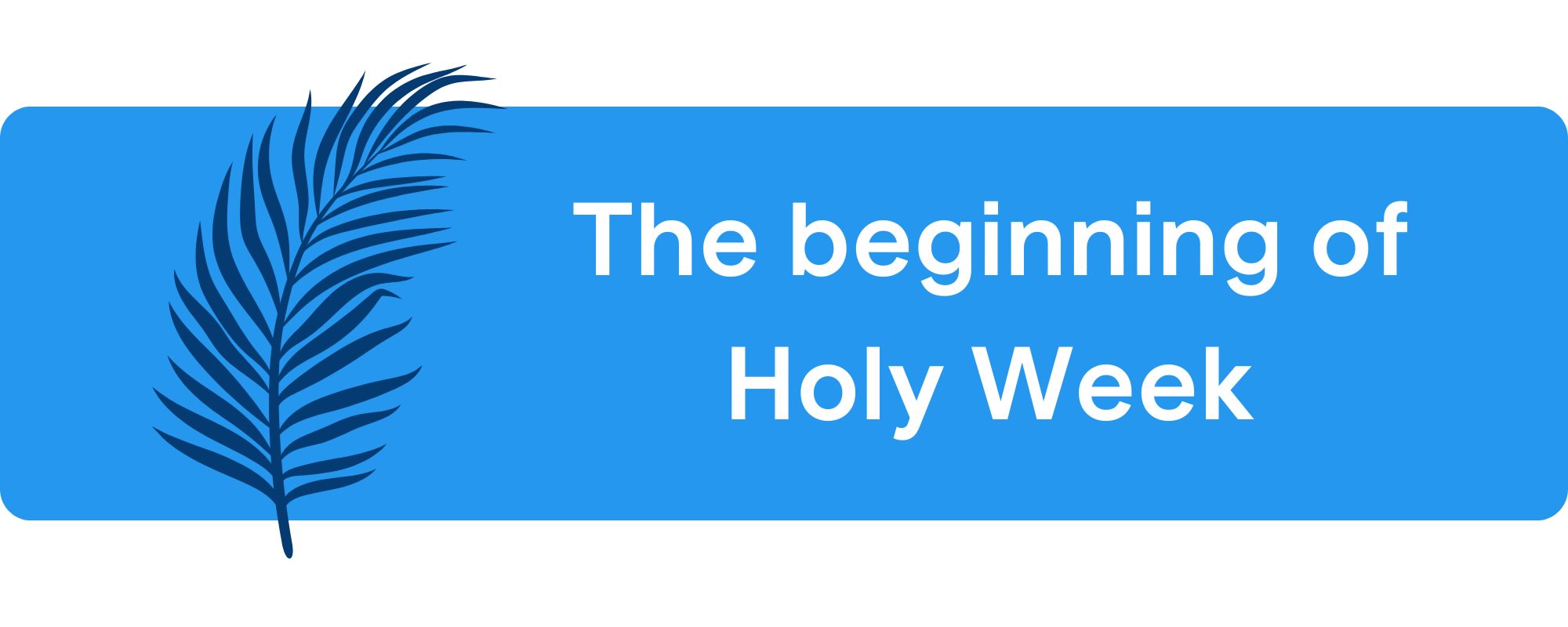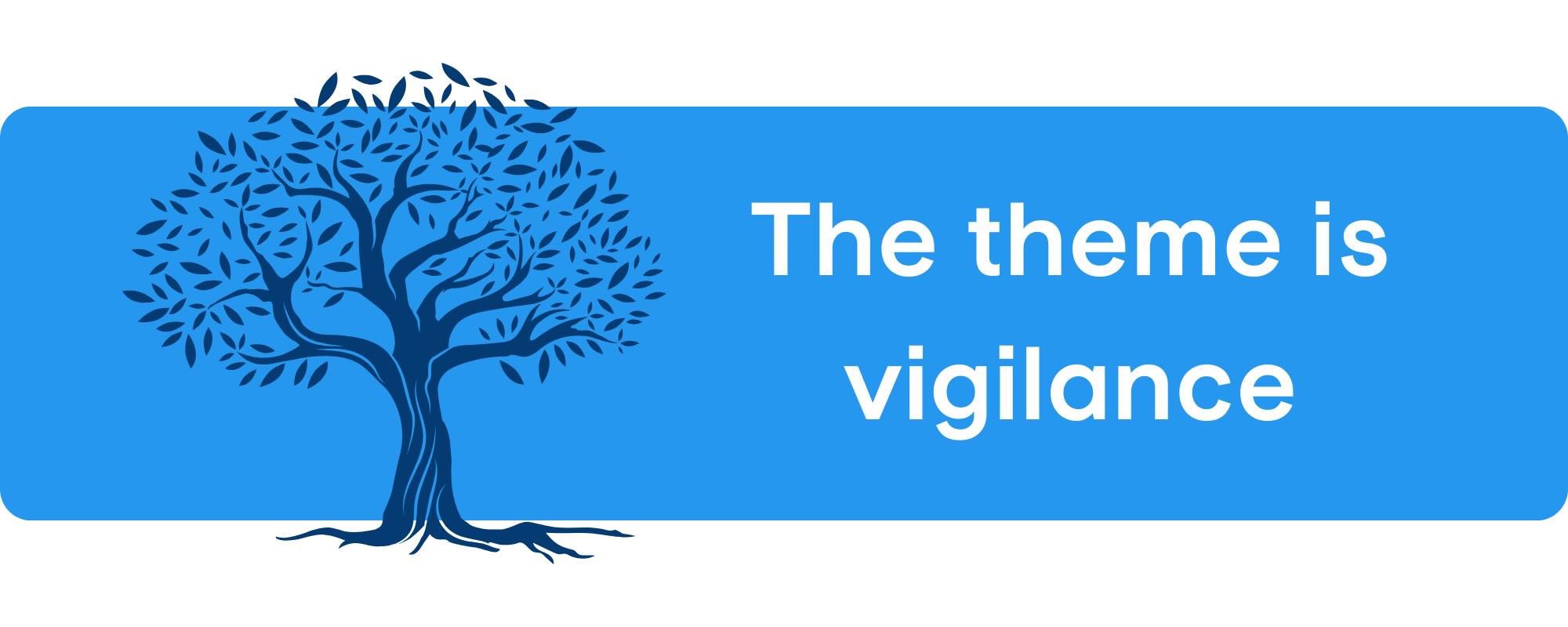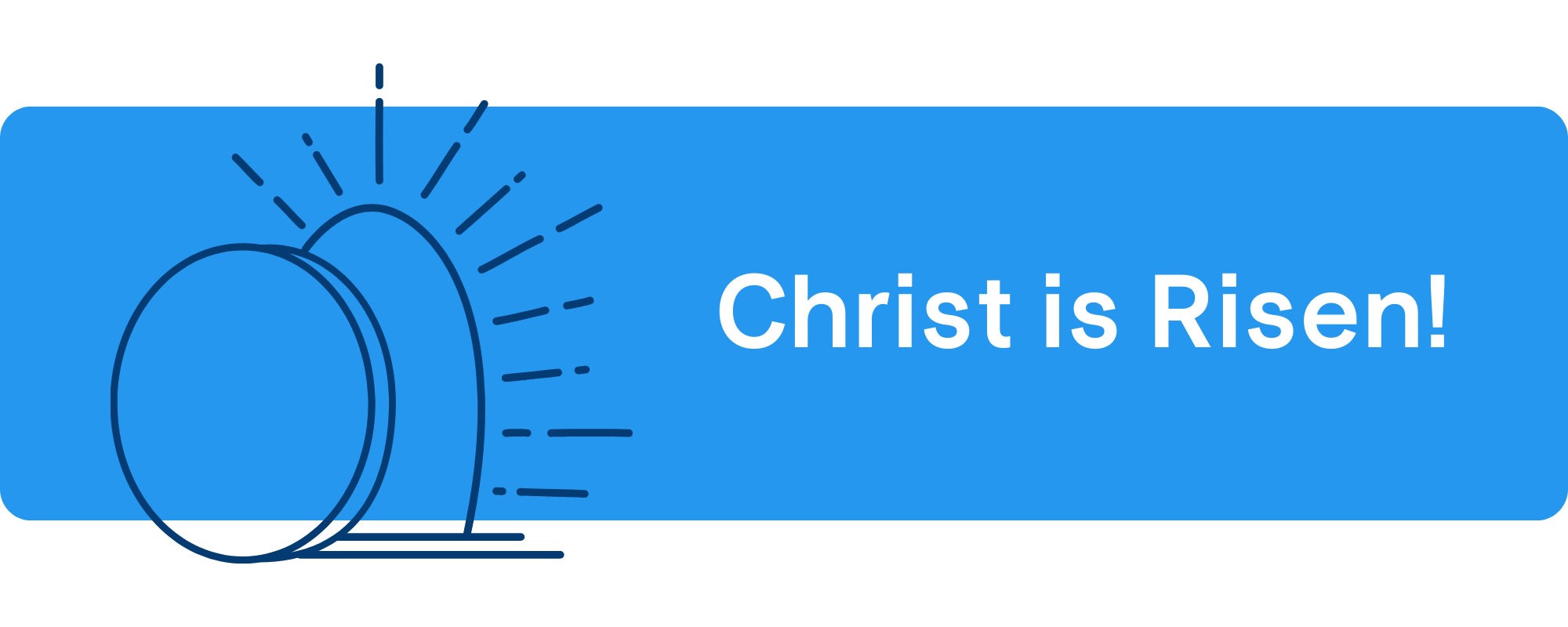What Is Holy Week?

Holy Week, Batman! It's almost Easter Sunday!
Have you ever come across the term "Holy Week" and wanted to know more, but didn't know where to begin?
If you're like me, you didn't grow up in a church or denomination that observed each of the days of this week. Here's a guide to what Holy Week is, the days celebrated, and some ways you can observe it.
What is the Meaning of Holy Week?
Sometimes called Easter Week, Holy Week is the week before Easter and the last week of Lent, a period of fasting and preparation for celebrating the resurrection of Jesus. This week is the most significant seven days on the Liturgical Calendar.

Holy Week begins on Palm Sunday and ends on Resurrection Sunday. Churches everywhere are making preparations for the holy days before Easter!
Every Christian sect, denomination, and church has developed its own practices and observances. However, many Christians are only familiar with Palm Sunday and Resurrection Sunday, and maybe Good Friday. Yet Holy Week has so much more to offer!
Why is Holy Week Important?
There are many opportunities for Christians to reflect on what Christ did during the week of His crucifixion. And there are just as many opportunities for ministers to lead their people this week in reflection and observation of Christ’s love. This is especially so for churches that have also been on a journey through the season of Lent in anticipation of this week.
I’ve listed below the name of each day, a little information about what it means, and suggestions for how you can use that day as a chance to lead your people in observation and worship, even if none of you have every done this before.
Lazarus Saturday
This day is spent in remembrance of Jesus traveling to Bethany and raising Lazarus from the dead, foreshadowing His own resurrection a few days later.
This day is not as well known or widely celebrated as the rest of the days of Holy Week, but there are records of its observance as early as the 7th and 8th centuries. Lazarus Saturday is observed mostly among Eastern Orthodox churches. Even if this day is new to you, there is a lot our Eastern brothers and sisters in Christ can teach us.
The focus of the day is two-fold:
- This is a day of joy and celebration! Lazarus was raised back to life, a sign of what Christ will do for each of us
- The Pharisees began to plot in earnest to kill Jesus. Their hatred should leave us humbled and thankful that Jesus came to rescue us from the evil in our hearts
When is Lazarus Saturday 2025?
Saturday, April 12th
Ways to Observe Lazarus Saturday
Even if this is not a day your members are used to observing or celebrating, you could share a message on social media or record a video. Use the resurrection of Lazarus as an illustration of what Jesus will do for each of us.
Palm Sunday
Sometimes known as Passion Sunday, this day reflects on the moment Jesus rode into Jerusalem on a donkey as the people of the city greeted him by laying palm branches and coats on the ground while shouting “HOSANNAH”. These very same people would be shouting “CRUCIFY HIM” just a few days later.

When is Palm Sunday 2025?
Sunday, April 13th
Ways to Observe Palm Sunday
This is probably one of the biggest events on your church's calendar. I'm sure you already know what your church will be doing for this Sunday. Below are a couple of suggestions to round out the details of your plans.
This service should be a joyous occasion, so consider choosing worship music that is upbeat and gets people out of their seats. Help your people step into the shoes of the Israelites that greeted Jesus that day.
Many churches try to include a reading or sermon of the whole Passion narrative. People in the building might only attend this service and the following Sunday. This is a chance to offer everyone present the whole story of the crucifixion.
Fig Monday
Also known as Holy Monday, this day of Holy Week features Jesus cursing a fig tree for not bearing fruit, causing it to whither. Jesus also drives the moneychangers out of the Temple and addresses challenges to His authority.
When is Fig Monday 2025?
Monday, April 14th
Ways to Observe Fig Monday
If you are a pastor or ministry leader, you could livestream a brief video of you reading Matthew 21:12-27. Perhaps encourage viewers to light a candle and sit in silence, reflecting on Jesus declaring that faith can move mountains.
Some believers eat dried figs as part of their routine for the day, reflecting on the judgment coming for all those who reject Christ.
Holy Tuesday
This is the day Jesus shared the parable of the wise and foolish virgins and the parable of the talents. He also speaks eight “woes” against the Pharisees as well as delivers what is known as the Olivet Discourse.
The parable of the wise and foolish virgins is often reflected upon for Tuesday of Holy Week.
The theme of this day is vigilance, making sure we are all prepared for the coming of the Bridegroom.

When is Holy Tuesday 2025?
Tuesday, April 15th
Ways to Observe Holy Tuesday
You could send a message to your members encouraging them to read Matthew 23:1-25:30 alone or together as a family. Then prompt them to ask Jesus to help them remain vigilant and ready for His return.
Spy Wednesday
Also called Holy Wednesday or Good Wednesday. This was the day that Judas’ scheme to betray Jesus was formed after he met with the priests. The name comes from the fact that Judas was a traitor or “spy” among the disciples.
This was also the day a woman approached Jesus as He dined with His disciples and anointed His feet with oil and dried them with her hair. Jesus defends her actions.
When is Spy Wednesday 2025?
Wednesday, April 16th
Ways to Observe Spy Wednesday
In many churches, if they have candles lit, they extinguish all of them, leaving the sanctuary in total darkness. This is to reflect the darkness that would soon cover the earth at Jesus’ crucifixion.
You could write a message on social media or broadcast a brief livestream encouraging your people to light a few candles and read Luke 22:1-6 and Matthew 26:1-16. Then ask them to extinguish the candles and spend time in prayer thanking Jesus for His sacrifice.
Also, prompt them to reflect on the difference between the woman anointing Jesus and Judas plotting to betray Jesus.
Many Christians also choose to fast on this day, spending the day thanking Jesus for the suffering He was soon to endure, and accepting that their discomfort from hunger is a small taste of the pain Jesus experienced.
Maundy Thursday
Often called Holy Thursday, this is the day of the Last Supper. This is when Jesus used bread and wine to illustrate His body being broken and poured out, establishing "The Lord's Supper." This is also when Jesus washed the feet of His disciples and commanded them to follow His example.
The name comes from the Latin word “mandatum”, which means “commandment”. This is taken from John 13:34 where Jesus commands His disciples to do as He did when He washed their feet.

When is Maundy Thursday 2025?
Thursday, April 17th
Ways to Observe Maundy Thursday
This day is a unique opportunity to love and serve your members. If you are able to meet in person, wash the feet of a few of your members and have them do the same for others present. Afterward is a good time to share communion.
If you are not able to meet in person, instruct your members to gather as a family and have the parents wash the feet of the children. This is to model humility and servant leadership. Then they can spend time taking communion together.
If you and your members are interested in taking your observance on Thursday even further, you could participate in a Passover Meal.
Good Friday
Also known as Holy Friday. Besides Resurrection Sunday, this is the most significant day of Holy Week. This is the day Jesus suffered immeasurably out of His endless love for us. This is a chance to humbly commemorate His prayer in the garden, betrayal and arrest, mock trial, torture, being rejected over Barabas, carrying His cross, and crucifixion.

When is Good Friday 2025?
Friday, April 18th
Ways to Observe Good Friday
There are a number of ways to reflect on this pivotal day. I’ve listed just a few ideas below:
- Read out loud the Passion Narrative in the Gospels, particularly Matthew 25:17-27:66 as that account is the longest and most detailed. This is the best day of the year to teach on Jesus' passion and death
- Check out our post on the Top Good Friday songs for your Good Friday service
- Host a movie night and watch The Passion of the Christ
- Lead the entire church in a day of fasting and prayer
I highly recommend you communicate with your leadership team and your members and develop ideas for how your church can best participate in Good Friday.
Black Saturday
Sometimes called Holy Saturday, this is the day that commemorates Jesus’ burial. Saturday in Holy Week is typically seen as a somber day where we mourn the death of our Lord.
Together, Good Friday and Holy Saturday are the most solemn days on the church calendar.
When is Black Saturday 2025?
Saturday, April 19th
Ways to Observe Black Saturday
Broadly speaking, most churches do not hold ceremonies or activities during the day. However, in some Eastern Orthodox churches, a service might be conducted just like a funeral procession to commemorate the death and burial of our Savior.
One way to make this day meaningful to your members would be to encourage them to spend time putting themselves in the shoes of Christ’s followers. For them, this was a day of doubt and fear. The resurrection was yet to occur and everything they assumed about the role Jesus would play in their liberation was shattered.
You could point your people toward reflecting on their own doubts and spending time in prayer over them.
Easter Vigil
Also called The Great Vigil of Easter, this event occurs just after sundown Saturday evening before Resurrection Sunday. The reason for this is because ancient Jews viewed sunset as the beginning of a new day. A full day was measured from sunset to sunset. So while it is still canonically Saturday, sunset marks the liturgical beginning of Resurrection Sunday!
When is Easter Vigil 2025?
Saturday evening, April 19th
Ways to Observe Easter Vigil
This event is often held as a candlelight vigil. Many churches around the world meet in a darkened sanctuary to hold candles and sing hymns about the coming resurrection.
While the mood is typically somber and introspective, there is also room for a feeling of anticipation. Though the disciples didn’t know it yet, something new and magnificent had begun that would radically change the world.
Quiet reflection and a sense of excitement come together during this vigil, preparing us to receive our risen Savior.
If your church isn’t meeting together in person, you could direct your members to gather around the dinner table and light candles while spending time pondering the miracle of resurrection. Then encourage them to share with one another what resurrection means to them and spend time in prayer thanking God for their new life in Him.
Easter Sunday
Christ is Risen! The tomb is empty! Death has lost its sting, and eternal life is now a reality for all those who are in Jesus.

When is Easter Sunday 2025?
Sunday, April 20th
Ways to Observe Easter Sunday
You and your church likely already have traditions in place for this day. You don’t need a software company telling you how to go big on the biggest Sunday of the year! I speak for everyone here at ChurchTrac when I say we will be joining you in spirit celebrating the resurrection as one body.
Holy Week FAQs
What are the 7 days of Holy Week in order?
- Fig Monday
- Holy Tuesday
- Spy Wednesday
- Maundy Thursday
- Good Friday
- Black Saturday
- Easter Sunday
Why is it called Good Friday?
Yes, Good Friday is a dark day of sorrow and grief. But it is a Good Friday because of what Christ did for us on the cross that day.
What did Jesus do on each day of Holy Week?
- Fig Monday - Jesus curses a fig tree
- Holy Tuesday - Jesus shares parables and gives the Olivet Discourse
- Spy Wednesday - Jesus defends the woman who anoints his feet
- Maundy Thursday - Jesus performs the Last Supper and gives his disciples a new commandment
- Good Friday - Jesus is crucified
- Black Saturday - Jesus is buried
- Easter Sunday - Jesus is resurrected!
What do Christians do in Holy Week?
Many Christians reflect back on Lent and how their faith has grown through fasting. They also prepare for Easter.
Depending on your church or tradition, you can also participate in church services each day of Holy Week.
What happened to Jesus on Good Friday and Easter Sunday?
Good Friday is the day Jesus is hung on the cross and killed for our sins. Easter Sunday is the day he conquered death and sin!
What is the Easter Triduum?
"Triduum" means "three days" in Latin. The Easter Triduum refers to the three days before Easter, from the evening of Maundy Thursday to Easter Sunday.
Christ Is Risen!
All of this barely scratches the surface of what is Holy Week and the full depth and richness of each day!
Spend time this year reading further resources or talking with friends from Christian denominations who have a long history of observing each day to learn more.
If you are a church that doesn’t have traditions involving the days listed above, you can use them as opportunities to minister to your people and point them toward what Jesus has done for us.

|
Matt
|